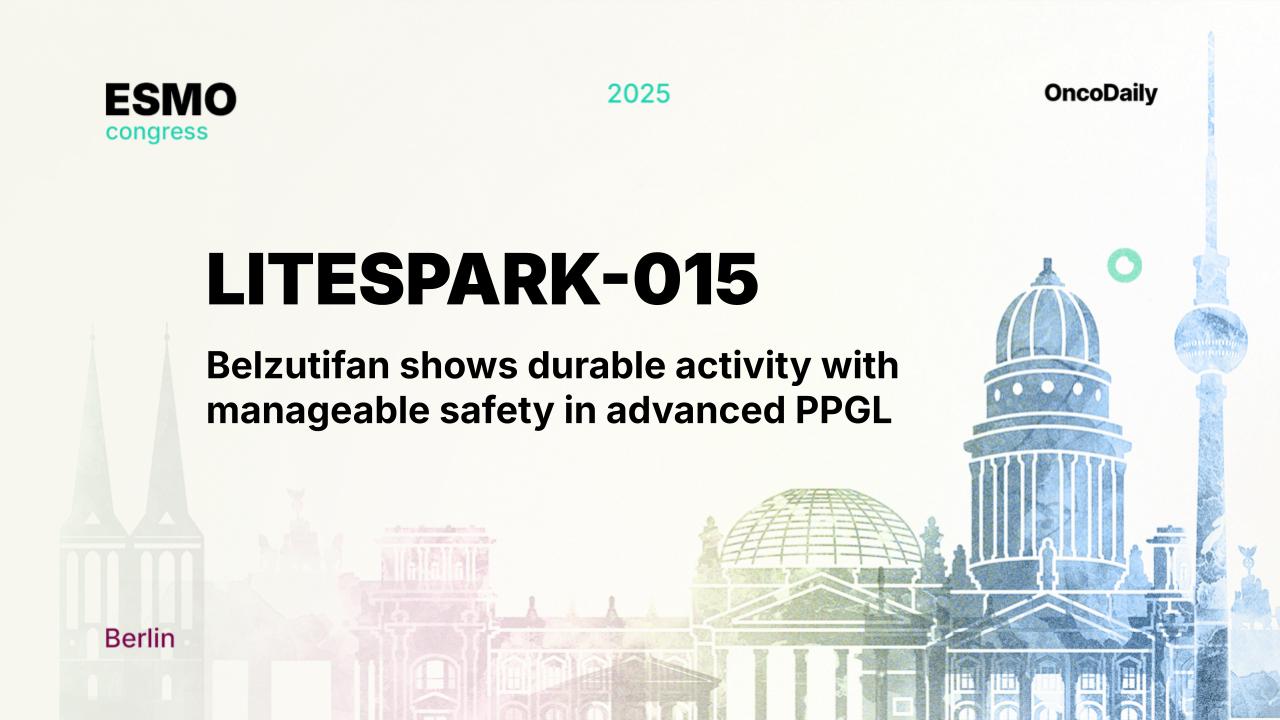ESMO 2025 featured LITESPARK-015 in the Proffered Paper session on NETs and endocrine tumours where Camilo Jimenez summarized a multicenter phase 2 study of belzutifan for advanced PPGL, highlighting clinically meaningful activity, durable responses, and a manageable safety profile.
Background
Pheochromocytoma and paragangliomas (PPGL) are neuroendocrine tumors with few effective, approved systemic options. Hypoxia-inducible factor 2α (HIF-2α) signaling is a key driver in PPGL biology. LITESPARK-015 (NCT04924075) evaluated the HIF-2α inhibitor belzutifan in advanced disease.
Methods
LITESPARK-015 is a global, nonrandomized, phase 2 pivotal study that enrolled participants aged ≥12 years with progressive, locally advanced, unresectable, or metastatic pheochromocytoma or paraganglioma (PPGL) and measurable disease confirmed by blinded independent central review (BICR) per RECIST 1.1 (Cohort A1). All participants received belzutifan 120 mg once daily until radiographic progression or unacceptable toxicity.
The primary endpoint was confirmed objective response rate (ORR) by BICR (RECIST 1.1); key secondary endpoints included duration of response, disease control rate, and progression-free survival by BICR (RECIST 1.1), as well as overall survival, safety, and reduction in antihypertensive medication use.
Results
At the May 23, 2024 data cut-off, 72 patients were enrolled (median age 51.5 years; median prior therapies 1 [range 0–5]); 39% reported familial paraganglioma syndromes—Type IV (SDHB) was most common (33%)—and 83% had hypertension. Median follow-up was 23.6 months.
- Antitumor activity: ORR 26%; DCR 85%. Median DOR not reached; median PFS 22 months; median OS not reached.
- Hypertension management: 30% achieved a ≥50% reduction in the total daily dose of ≥1 antihypertensive medication maintained for ≥6 months.
- Safety: TRAE in 99%; serious TRAE 11%. Grade 3/4 TRAE 46%/3%; dose reductions 14%; discontinuations 3%; no grade 5 TRAEs. The most common grade ≥3 event was anemia (22%).
- No new safety signals were identified.
Conclusions
Belzutifan produced clinically meaningful and durable antitumor activity with a manageable safety profile in advanced PPGL, alongside improvements in blood-pressure management for a subset of patients. These data support the use of belzutifan for patients with advanced PPGL and underscore the therapeutic relevance of HIF-2α inhibition in this disease.
You can read the full abstract here.
